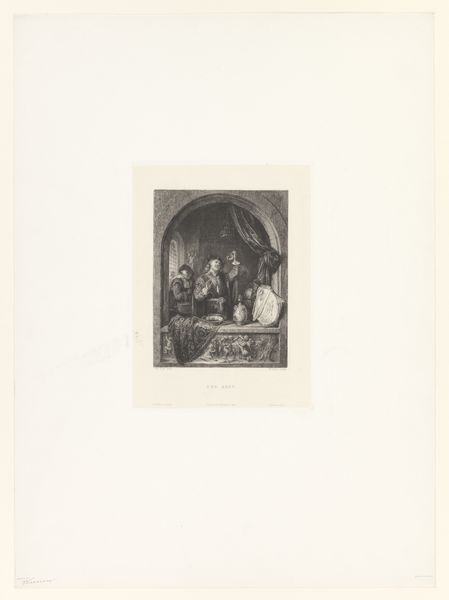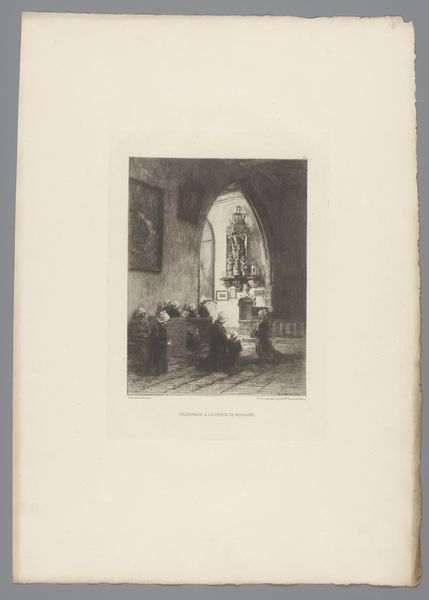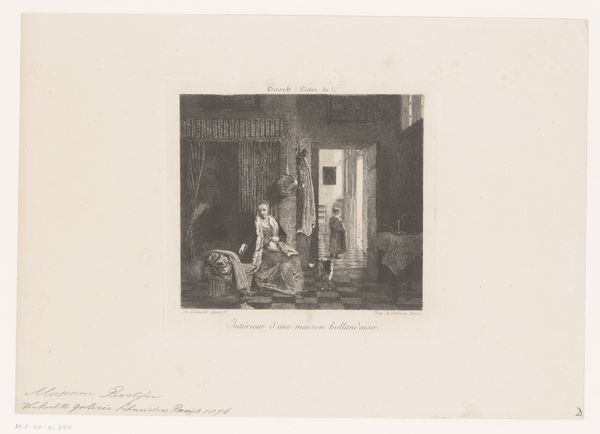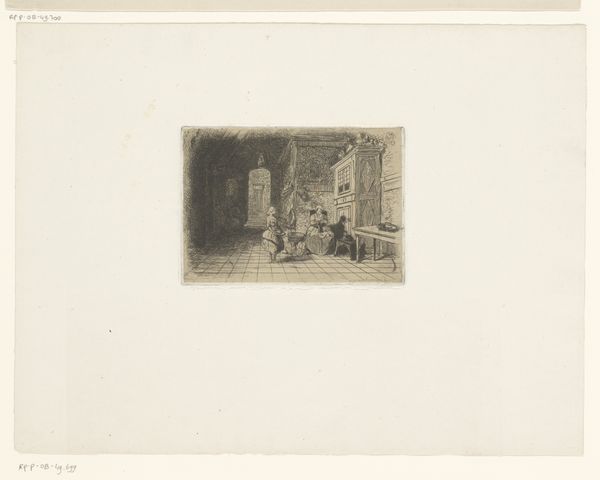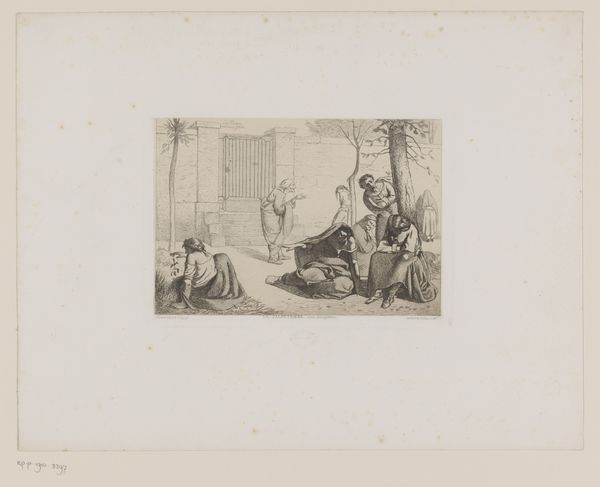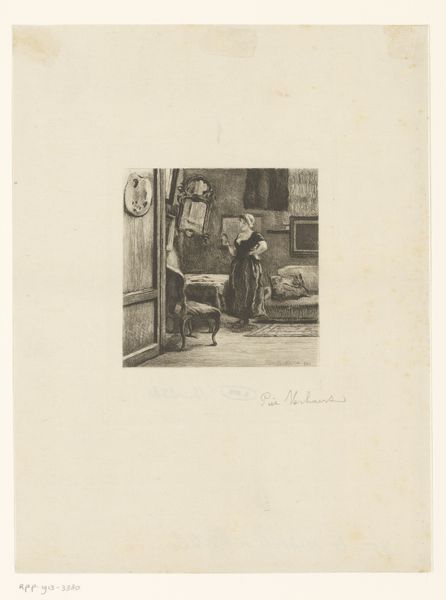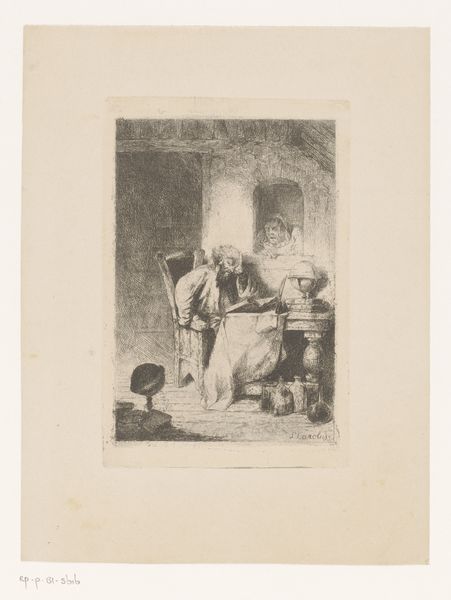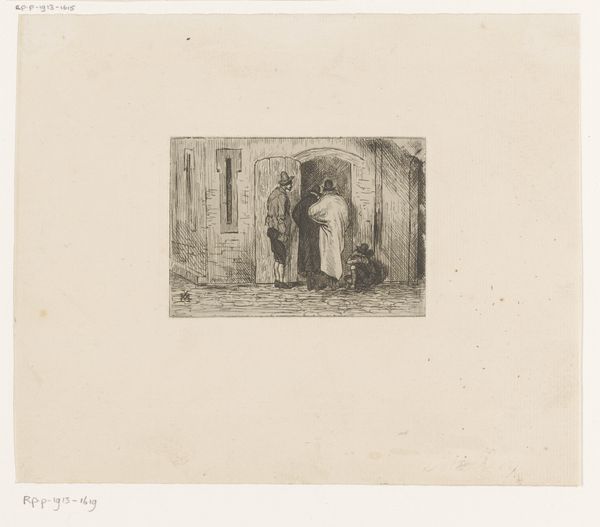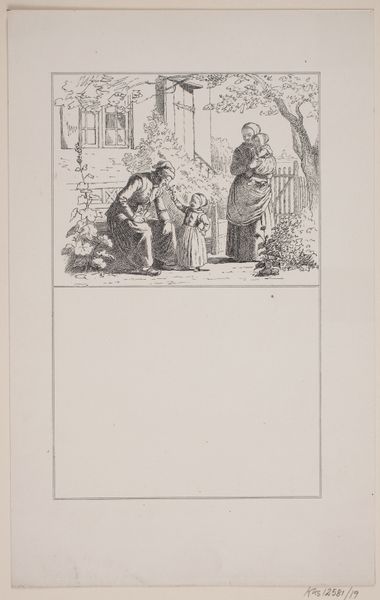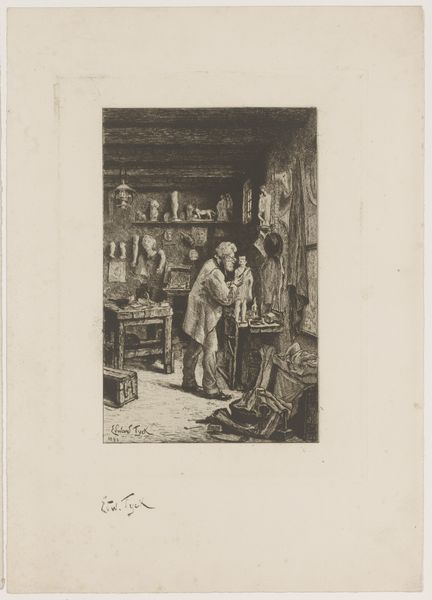
drawing, print, etching, paper
#
portrait
#
pencil drawn
#
drawing
# print
#
impressionism
#
etching
#
pencil sketch
#
light coloured
#
dog
#
paper
#
pencil work
#
genre-painting
#
realism
Dimensions: height 80 mm, width 119 mm
Copyright: Rijks Museum: Open Domain
Editor: So, here we have "Twee vrouwen en een man zittend op een bank voor een hek", created sometime between 1855 and 1913, attributed to Xavier Mellery. It's an etching, so it's got that delicate, almost ephemeral feel. It seems to capture a moment of quiet social interaction. What do you make of it? Curator: What immediately strikes me is the social dynamic encoded within the scene. Look at the positioning of the figures, their clothes. Who had the power in this exchange? Are we sure that this work captures that, and in what ways is power seen within the medium? The two women appear separated by a man, yes, but let's also investigate what it would mean to present each figure on their own to understand how their narratives might inform the meaning. Editor: That's interesting. I hadn't thought about the potential power dynamics within this meeting so pointedly. What about the dog in the foreground – does it mean anything? Curator: A dog can symbolize fidelity or companionship. In the context of the two women and a man, perhaps it highlights the roles these figures are expected to perform in society. Consider the social constraints placed upon women of this period. Does this gathering subvert those norms or reinforce them? Why would one make this an etching instead of a more bold material? Editor: So, the artist isn't just showing us a scene, but inviting us to consider the complexities of the era's gender roles and class structures... Curator: Exactly. By situating this drawing within its historical context, we gain a richer understanding of its potential commentary on Belgian society during that era. And also look at who made it—what were their politics, how did the person who produced this engage with conversations on inequality? Editor: It definitely gives me a lot to think about, it isn’t just a snapshot of daily life. I appreciate understanding not just how it was done, but why it was done, especially as it fits in cultural conversations. Curator: Agreed. Art offers a visual record of our history, but also provokes dialogue.
Comments
No comments
Be the first to comment and join the conversation on the ultimate creative platform.
